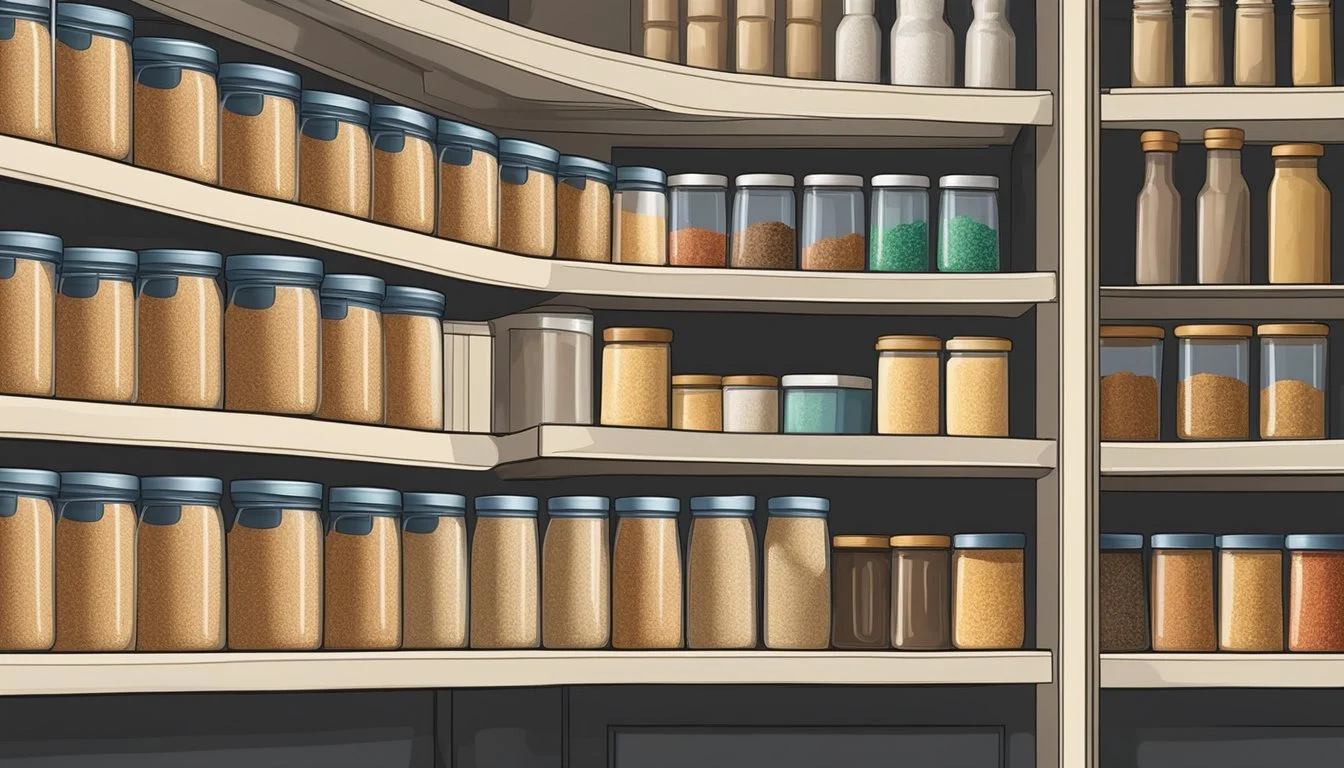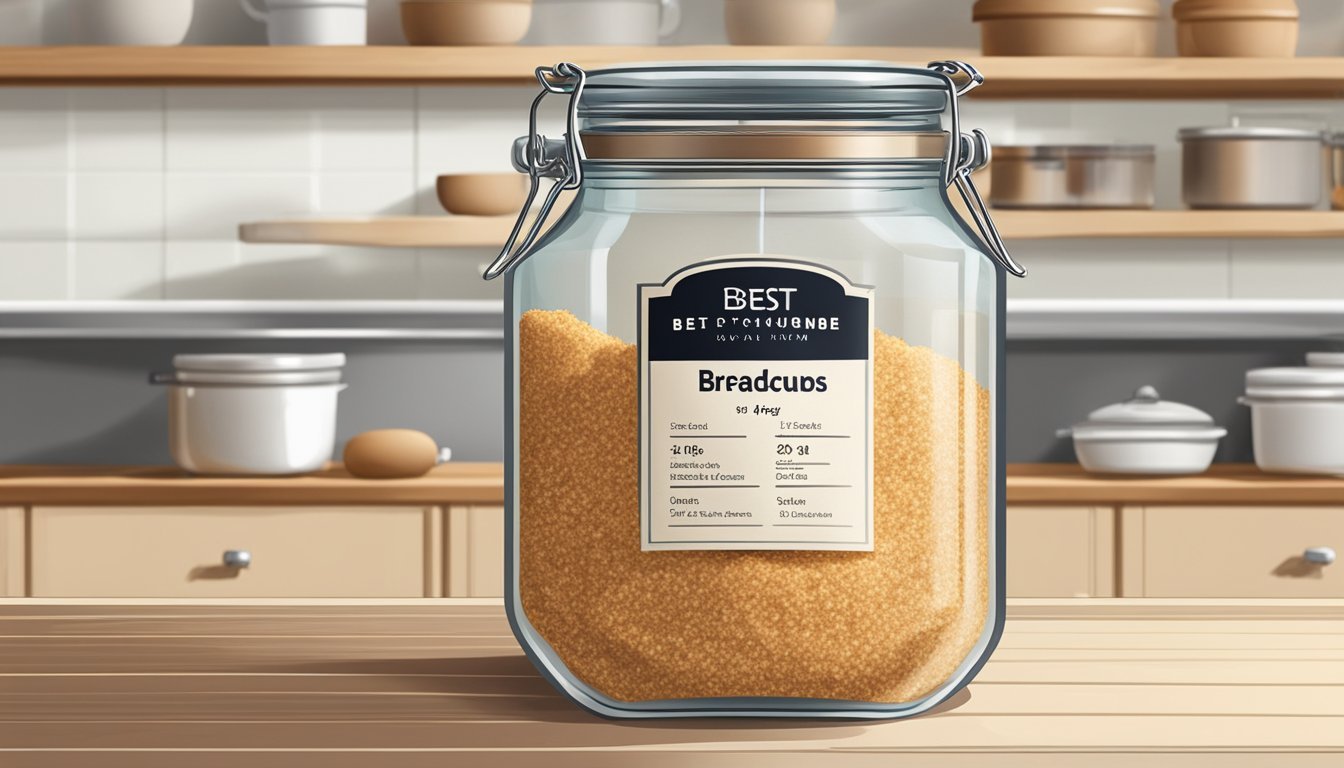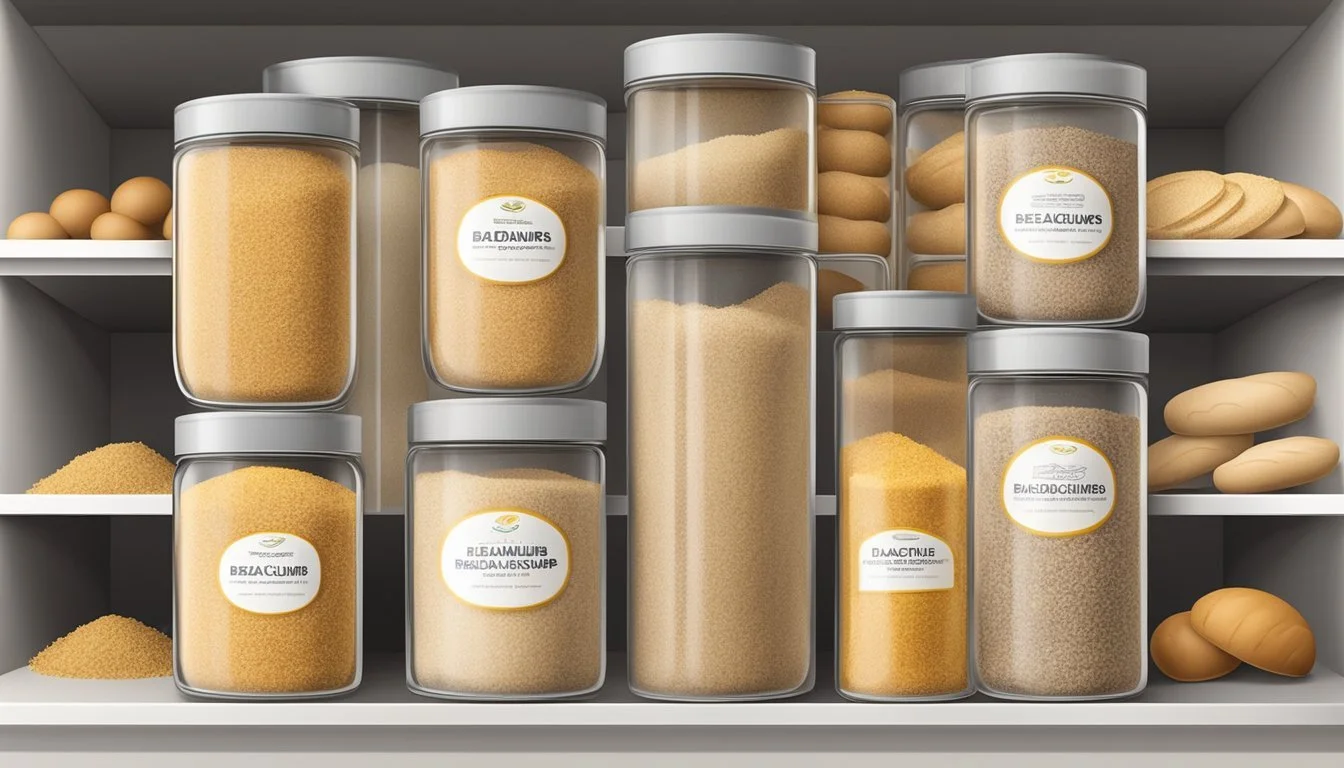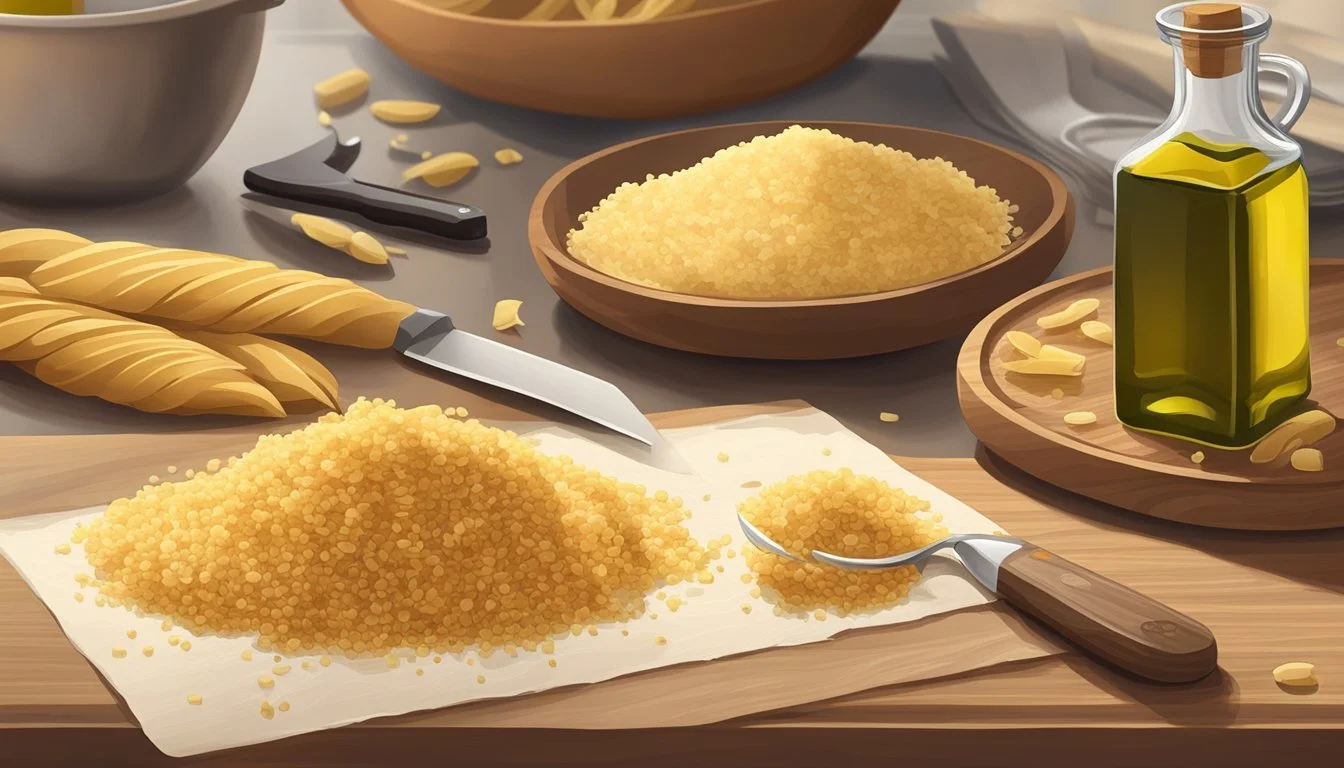How Long Do Italian Breadcrumbs Last?
Italian breadcrumbs (how long do italian breadcrumbs last?) are a staple ingredient found in many kitchens, prized for their ability to add a crisp texture and a burst of flavor to dishes. Their longevity on the shelf largely depends on their storage conditions and whether they are homemade or store-bought. Generally, store-bought Italian breadcrumbs can remain usable for about six months if they are kept in a cool, dry place. This period might extend slightly past the printed expiration date, granted the breadcrumbs are properly sealed and show no signs of spoilage.
The shelf life of homemade Italian breadcrumbs is considerably shorter due to the lack of preservatives. Typically, they should be used within two weeks when stored in a pantry. Refrigeration can extend their freshness, but since they readily absorb moisture, it is crucial to store them in an airtight container to maintain dryness and prevent mold growth.
For both homemade and store-bought varieties, signs of spoilage include a stale smell, a change in color, or any visible mold. It is important to inspect the breadcrumbs before use to ensure that the quality is sufficient, as using compromised breadcrumbs could affect both the taste and safety of the culinary creation.
Understanding Italian Breadcrumbs
Italian breadcrumbs play a crucial role in numerous recipes, offering a unique flavor profile and texture. They elevate dishes with their seasoning and are more than just ground-up bread.
Definition and Varieties
Italian breadcrumbs are a variant of plain breadcrumbs that have been seasoned with traditional Italian herbs and spices. They can be homemade or store-bought, with the homemade variety often fresher but with a shorter shelf life. Store-bought Italian breadcrumbs typically include a blend of seasonings such as garlic, oregano, parsley, and basil, and may also contain included salt and preservatives to extend shelf life.
Ingredients and Flavor Profile
The robust flavor of Italian breadcrumbs is derived from a blend of ingredients that includes:
Dried herbs: Oregano, parsley, basil, thyme
Spices: Garlic powder, onion powder (how long does onion powder last?)
Breadcrumbs: Either plain or pre-seasoned
These seasonings provide a depth of flavor that complements Italian cuisine. The homemade version allows for customization of the flavor profile by adjusting the type and amount of herbs and garlic used.
Nutritional Considerations
When considering the nutritional aspects of Italian breadcrumbs, it is important to note the following:
Sodium Content: Store-bought varieties may contain higher levels of sodium due to added salt.
Calories: Breadcrumbs are relatively high in calories, which come mostly from carbohydrates.
The nutritional profile will differ between homemade and store-bought breadcrumbs due to variation in ingredients used. Homemade breadcrumbs can offer a healthier option as one has control over the sodium and the type of bread used.
Making Italian Breadcrumbs at Home
Making homemade Italian breadcrumbs allows for complete control over the quality, flavor, and texture of the breadcrumbs. One can choose their preferred bread type, including fresh or old bread, and create a product that surpasses store-bought versions in taste and customization.
Preparation Methods
When making Italian breadcrumbs at home, the process usually involves drying out bread before pulverizing it into a fine texture. Homemakers can use a food processor or blender, with the former being more common due to its ability to consistently grind bread into uniform crumbs. Oven baking is a typical method for drying the bread. Bread pieces are spaced evenly on a baking sheet and toasted at a low temperature until completely dry.
Homemade vs. Store-bought
Homemade Italian breadcrumbs can be more flavorful and healthier compared to store-bought versions. Homemade breadcrumbs are free of preservatives, and the maker can adjust seasonings to taste. They also afford the opportunity to utilize whole wheat or gluten-free bread for those with specific dietary needs. In contrast, store-bought breadcrumbs might contain additional fillers or additives that do not align with certain dietary preferences.
Choosing the Right Bread
The selection of bread is critical when making homemade Italian breadcrumbs. Ideally, old bread that's slightly stale works best as it's drier and easier to process into crumbs. However, any variety of bread can be used, including fresh bread, Italian bread, or specialty bread like whole wheat or gluten-free options. If using fresh bread, it must be thoroughly dried out in the oven to achieve the right consistency for crumbs.
Proper Storage Techniques
Italian breadcrumbs, a versatile pantry staple, maintain their quality when stored correctly. Each storage method can influence the shelf life and condition of the breadcrumbs.
Storing in Pantry and Cupboards
Pantry or cupboard storage is the most common method for keeping Italian breadcrumbs. They should be placed in an airtight container or sealed plastic bag to protect against moisture and pests, which preserves their crisp texture. The ideal condition is a cool and dry environment at room temperature. Under these circumstances, Italian breadcrumbs can last for up to six months.
Refrigerating for Extended Freshness
For those who reside in humid climates or wish to extend the freshness of their breadcrumbs beyond normal pantry shelf life, refrigerating is a viable option. In a fridge, breadcrumbs should be kept in an airtight container or jar to prevent them from absorbing other odors and moisture. Properly stored in the fridge, breadcrumbs can stay fresh for a longer period, usually around three months.
Freezing for Longevity
To freeze Italian breadcrumbs, one should first ensure they are completely dry to avoid clumping. Using an airtight container or a resealable freezer bag, they can be stored in the freezer. This method is especially useful for long-term storage, potentially extending shelf life for up to a year. One should label the container with a date to assist in tracking how long the breadcrumbs have been stored.
Shelf Life and Spoilage
Italian breadcrumbs can be a versatile ingredient in many dishes, offering texture and flavor. Proper storage techniques can extend their usability, while recognizing signs of spoilage ensures they're safe to consume.
Determining Freshness
Shelf life for Italian breadcrumbs typically spans 6 months to a year when stored in ideal conditions. Factors affecting freshness include the presence of preservatives, the type of container used, and storage conditions. Preservatives can extend shelf life, while an airtight container maintains quality by preventing moisture and contaminants.
Maximizing Shelf Life
To ensure breadcrumbs retain their quality for as long as possible, they should be stored in a cool, dry place. Here's a concise guide:
Container: Use an airtight container or a tightly sealed plastic bag to ward off humidity and pests.
Location: Keep the container in a pantry or cupboard away from heat sources and sunlight.
Signs of Spoilage
Although breadcrumbs typically last beyond the printed expiration date, they can go bad. Indicators include:
Odor: A sour or otherwise unpleasant odor is a clear sign that the breadcrumbs should not be used.
Mold: Visible mold growth indicates spoilage and potential health risks.
Texture: Clumping or an excessively hard texture suggests they've been exposed to moisture and may be spoiled.
Monitoring breadcrumbs for these signs can prevent the utilization of spoiled products and ensure the safety and quality of your dishes.
Culinary Uses of Italian Breadcrumbs
Italian breadcrumbs serve as a versatile ingredient, enhancing dishes with their texture and flavor. They are commonly incorporated in various recipes, employed as both a key component and a finishing touch.
Recipe Enhancement
In the realm of recipe enhancement, Italian breadcrumbs add a desirable consistency and depth of flavor. Meatloaf and meatballs are prime examples, where breadcrumbs bind the ingredients, and help in retaining moisture. They can also be infused in mac and cheese to introduce a subtle crunch or mixed with herbs to complement the flavor profile of soups.
Breading and Toppings
Breading with Italian breadcrumbs provides a crisp exterior to chicken cutlets or vegetable fritters. This culinary technique not only adds texture but also seals in the moisture of the item being breaded. As toppings, breadcrumbs are sprinkled over baked dishes such as casseroles and gratins, resulting in a golden, crispy layer that enhances the overall dish.
Typical Breading Procedure for Chicken:
Coat chicken in flour.
Dip in beaten eggs.
Press into breadcrumbs.
Topping for Mac and Cheese:
Sprinkle breadcrumbs mixed with melted butter on top before baking.
Creative Uses in Cooking
Beyond traditional methods, Italian breadcrumbs find their way into inventive applications in the kitchen. They can substitute for panko breadcrumbs (how long do panko breadcrumbs last?) for added Italian seasoning in Asian recipes or be toasted with garlic and herbs to make pangrattato, which adds texture to pasta dishes. Even in baking, breadcrumbs can be used to line cake pans to prevent sticking, showcasing their adaptability.
Breadcrumbs in Baking: Line the bottom of cake pans to achieve a non-stick surface.
Pangrattato for Pasta: Toast breadcrumbs with olive oil, garlic, and herbs; sprinkle over pasta for crunch.
Health and Dietary Considerations
In evaluating the impact of Italian breadcrumbs on health and diet, consumers must consider the sodium content and presence of additives, as well as gluten-free and whole wheat options for those with specific dietary needs.
Understanding Sodium and Additives
Italian breadcrumbs can contain varying levels of sodium and additives, which may have implications for dietary health. Sodium is often added for flavor but can contribute to increased blood pressure if consumed in high quantities. The American Heart Association recommends no more than 2,300 milligrams a day, moving toward an ideal limit of 1,500 mg per day for most adults. Consumers should review the nutrition label to assess sodium content.
Typical additives might include preservatives, such as calcium propionate, to extend shelf life, and spices or flavor enhancers. These additives are generally recognized as safe; however, individuals with food sensitivities should read labels carefully.
Gluten-Free and Whole Wheat Options
As awareness of gluten-related disorders has risen, manufacturers have responded by producing gluten-free breadcrumbs. These products substitute wheat with alternatives like rice or corn flours. They provide a similar texture and are suitable for those with celiac disease or gluten sensitivity.
On the other hand, whole wheat breadcrumbs offer higher dietary fiber and nutrients compared to their white bread counterparts. They are a healthier choice for individuals seeking more wholesome grain options. While whole wheat options still contain gluten, they can be part of a balanced diet that supports digestion and cardiovascular health.
Tips and Tricks
This section offers practical advice for achieving the ideal texture and flavor in Italian breadcrumbs through proper preparation and seasoning techniques.
Creating the Perfect Texture
For the ultimate texture in Italian breadcrumbs, one must aim for a consistent fine crumb. Achieving this texture begins with using fully dried bread to prevent any moisture from affecting the crumb quality. A food processor can efficiently break the bread into uniformly fine crumbs. Sifting the crumbs after processing ensures an even finer texture and removes any larger, unprocessed pieces.
Sifting: Utilize a mesh strainer to achieve uniformity.
Drying Method: Bread should be oven-baked at a low temperature until thoroughly dry before processing.
Herb and Spice Incorporation
Infusing Italian breadcrumbs with herbs and spices not only adds depth to the flavor but also distinguishes them from the ordinary variety. It's crucial to use the right balance and to evenly mix them into the crumbs. Key seasonings typically include dried oregano, dried basil (how long does dried basil last?), dried parsley (how long does dried parsley last?), and dried thyme. (how long does dried thyme last?) Black pepper can be freshly ground and added to enhance the mix with a sharp, piquant note.
Herbs & Spices Table:
Ingredient Description Dried Oregano Adds a subtle, earthy warmth commonly found in Italian seasoning. Dried Basil Contributes a sweet, aromatic flavor. Dried Parsley Brings a light, fresh taste and a pop of color. Dried Thyme Introduces a slight minty note that complements other herbs. Black Pepper Provides a spicy kick that can be adjusted to taste.
Incorporation Tips:
Ensure spices and herbs are evenly distributed for a consistent flavor throughout.
Herbs should be crushed or finely chopped to maximize the release of flavors.
Mix seasonings with the fine crumbs using a gentle folding method to maintain texture.









